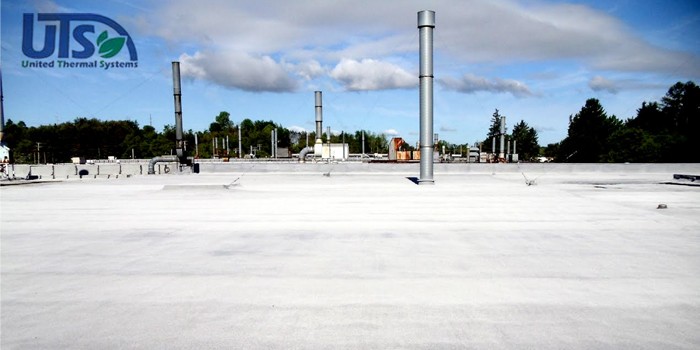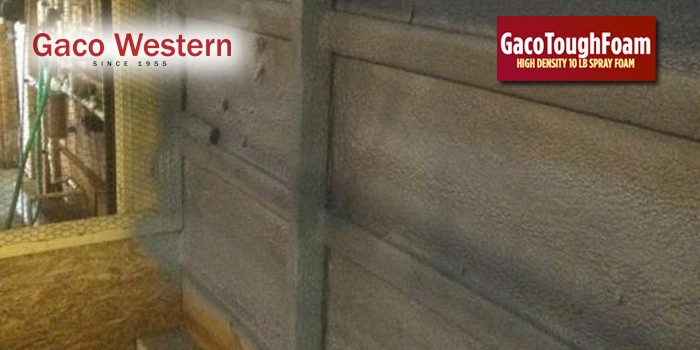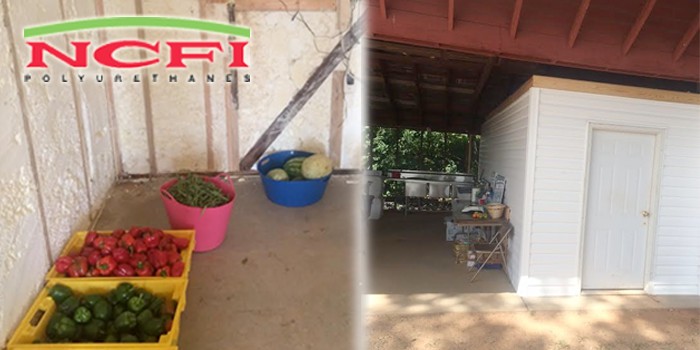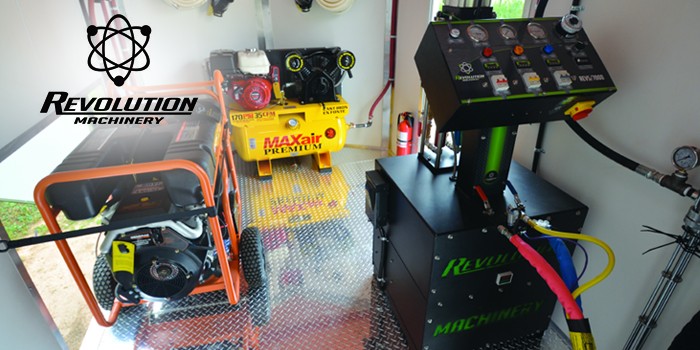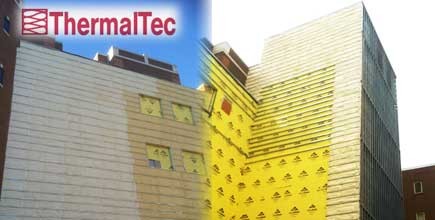
JMU Hospital Retrofitted With Closed-Cell SPF
HARRISONBURG, VA – July 31, 2013 – Aging structures seem to meet one of two fates: they either get renovated or get demolished to make way for new buildings. The historic Rockingham Memorial Hospital complex at James Madison University (JMU) was erected in 1912 and had few renovations as time passed, which left the building deteriorated to the point where the members had to make one of the two aforementioned choices. They decided to retrofit their building, an initiative that included an application of spray foam insulation. The SPF was included to create a monolithic structure that would give life to their hospital for many years to come, as well as generate optimal temperatures inside of the hospital when the weather outside isn't ideal.
In addition to the retrofit initiative, the school members decided to expand the hospital by constructing a new section of the hospital and creating The Student Health and Success Center (SHSC), a central location for several student support services at JMU. It was decided that the spray foam application would kill two birds with one stone so that once the SHSC was built, it would also be insulated with SPF to improve the energy efficiency of the 250,000 sq. ft. building.
The school board members brought in ThermalTec Insulation for the job, which entailed a four-fold application of spray polyurethane foam: on the interior building envelope of the hospital; on the outside of a 100 ft. stairwell tower; on the outside of a 60-foot wall that connects to the stairwell tower; on the outside of a small basement excavated underneath the stairwell tower; and on the outside of the two-story SHSC that is currently under construction.
Thus far, the stairwell chase and connecting wall SPF applications have been completed. Additionally, four floors and the underside of the roof on the interior have been completed. Left remaining on the job are the application of SPF to the outside of SHSC and the SPF installation on the exterior walls of the first floor of the hospital.

Joe Hogge, project manager for ThermalTec, explained that the reason why SPF was applied on the outside of the tower and the wall of the hospital was because DensGlass sheathing and horizontal stud framing was installed in both areas. SPF was applied on both areas and will be subsequently covered by metal panels. For the inside, the crew installed foam on a cement masonry unit (CMU) wall substrate, where dry wall will be hung following the SPF application. Foam was applied to the connecting wall, the stairwell tower, and the basement little by little instead of completing each application entirely.
Since the project started last January, the weather in Virginia went from cool to hot. Hogge said that the crew did the inside SPF application during the cold days, moving on to the outside when it became warmer.
Hogge found the project both challenging and intriguing from the get-go.
"Logistically, it is one of the hardest jobs we've ever done; it's not everyday you get to insulate a 100-foot tower," he said. "We knew it was going to be a challenge applying spray foam on the inside and the outside but it was overall the best energy-efficient option."
The crew, outfitted with safety harnesses, used a man lift to work on the connecting wall of the hospital and scaffolding for the stairwell tower. Hogge mentioned that using scaffolding in such a high structure proved tricky, but it was the only way to get to the summit of the tower since the excavation of the basement, which was right below the tower, took place at the same time. Accessing the tower's surface by lift would have meant that the crew would have had to park their rig around the small basement excavation and been too far away from the building to apply the SPF properly, so they used scaffolding.
"With that stair tower being 100 feet high, the digging out for that basement made it even higher. There's a reason why this tower had sat there all those years without insulation, nobody was up for the challenge," explained Hogge. "We were able to put up scaffolding all the way around the stair tower, all the way to the top."
The ThermalTec crew wore jumpsuits and fresh air respirators during the project. For overspray protection on the stairwell tower application, the crew utilized a 100 ft. long by 20 ft. high black shade-cloth that went around the outside of the scaffolding and fastened onto it. The shade-cloth had tiny holes on it, which permitted air to go through it, but not SPF overspray. According to Hogge, the wind would get significantly stronger as the crew worked its way up the stairwell tower, so the shade-cloth was absolutely necessary to avoid overspray. For the inside applications, the ThermalTec crew prepped the floors and the existing windows with plastic poly sheeting for overspray protection. Hogge noted that so far during the project, his crew hasn't witnessed any incidents or received any complaints of overspray, which is remarkable when considering the heavy foot traffic around the university.

The crew worked with one rig on site equipped with a Graco Reactor E-20 proportioner. According to Hogge, the crew also worked with a Graco Reactor E-30, which was brought in during the stairwell tower application. The E-30 proportioner enabled the crew to have a longer hose to cover more distance when it came to applying SPF to the higher areas of the stair tower.
"The E-20 didn't have enough hose to reach certain parts of the building, no matter where we parked our rig," said Hogge. "We were stretching every bit of 300 feet of hose in the higher parts of the building."
The two-man crew installed two inches of Permax 1.8, a 1.8 lb. closed-cell spay polyurethane foam manufactured by Henry, on the outside of the stairwell tower, the basement, the hospital exterior walls and the outside section of the hospital. Three inches of Permax 1.8 were applied to the underside of the roof to cover the minimal penetrations generated over time and bolster the roofline. For the basement application, Hogge mentioned that his crew had to wait until the small excavation had CMU installed to it by another contractor and then proceeded to apply SPF on the CMU substrate.
According to Hogge, the crew has gone through 25 sets of foam and looking to reach 40 in total by the time the first floor and the outside of the SHSC addition are foamed. Hogge estimates the project will encompass a total spray area of 80,000 sq. ft. upon completion. The project has been ongoing for the last seven months and, according to Hogge, the ThermalTec crew should complete the project before October.
As the construction of the SHSC reaches its final stages, the ThermalTec crew look to install SPF on the exterior walls of the first floor of the hospital before getting to the addition, which will cap off a strenuous nine-month undertaking.
Hogge said that even though the hospital and its new addition won't be operational until well after ThermalTec completes their portion of the renovation, the owners are very happy with the way things are going. Hogge revealed that in the end, the application of spray foam will make the JMU hospital an energy-efficient structure, and that the SPF will help tremendously with the heating and cooling costs.
About ThermalTec Insulation: Serving Richmond, Virginia, and surrounding areas, ThermalTec Insulation provides insulation and energy audit services. Offering quality service, ThermalTec will go the extra mile to make its customers' commercial building or residential home energy-efficient and successfully cut down on energy costs. For more information on ThermalTec Insulation, please click on the link provided below.


